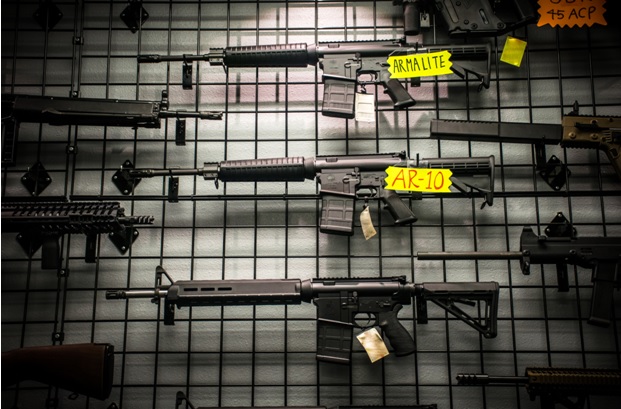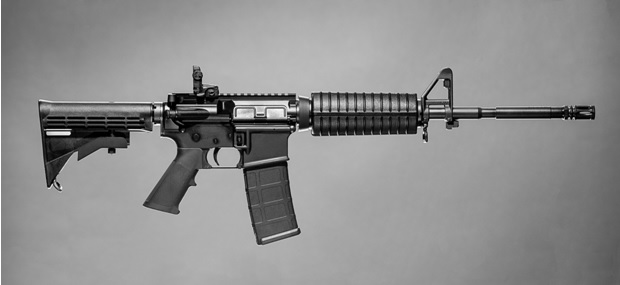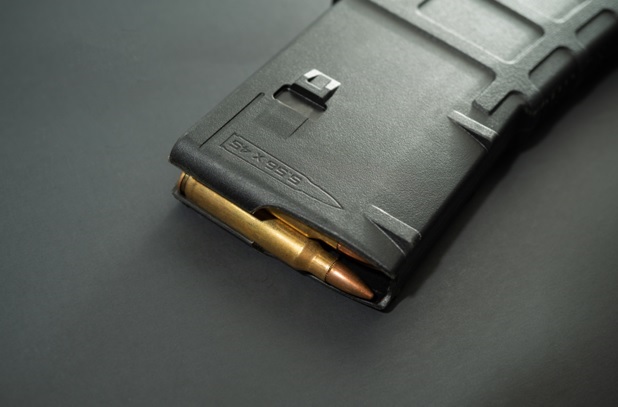
You don’t need to be a beginner to get confused by the AR-10 and AR-15. They look identical and in many ways, they are. The only real functional difference is caliber, and since the AR-15 and variants have been produced in so many different calibers, even that can make it confusing.
Add in the fact that these rifles were both designed by the same person, Eugene Stoner, for the same applications as light infantry rifles, and the lines blur even more. So let’s take a look at some of the differences between these rifles, since pretty much everything else is the same in terms of functionality, even if sizing/weight makes compatibility a problem.
Get the details here before you look for a lower parts kit or a complete upper assembly for either one of these platforms.
AR-10 vs. AR-15: A Short History
Believe it or not, the AR-10 was actually developed before the AR-15 for the military, which needed a light infantry rifle chambered in 7.62x51mm NATO - the same cartridge that was paired (infamously) with the ill-fated M14, one of the most hated service rifles in American history.
The 7.62x51mm NATO cartridge’s use with light infantry rifles was, however, short-lived. Though it is still used in certain applications, such as in sniper rifles and as a machine gun cartridge, it has been supplanted largely by the 5.56x45mm NATO cartidge that remains in service with the M16 to this day.
The M16, as you may know, is hardly more than the military variant of the AR-15 that is so widely loved by civilians.
The AR-15 was developed slightly after the AR-10 for use with the lighter, light-kicking, flatter-shooting 5.56x45mm NATO cartridge.
This difference in cartridge pairing remains the major difference between the two rifles.
However, it is important to note that there is a very wide proliferation of different AR-15, variants and similar sporting rifles that are not chambered in 5.56, such as .223 and .300 AAC Blackout, whereas the AR-10, AR-308 and clones are basically exclusively chambered in 7.62 or .308.

So What Are the Differences?
Beyond caliber, there are a few other differences between the AR-15 and AR-10. Given the (typically) larger cartridge, the AR-10 has a larger and heavier bolt carrier group. They are not interchangeable between the two platforms if the calibers are not the same. Otherwise, the operation and functionality of the BCGs themselves are identical.
While both rifles use a gas impingement system to cycle the action, the gas systems themselves, though identical in operation, are not identical in specification. The AR-10’s gas system requires larger ports to cycle the larger, heavier BCG.
The upper and lower receivers are typically not interchangeable between the AR-15 and the AR-10. This is because of the difference in caliber. The lower, specifically, must be longer in the AR-10 to accommodate the larger cartridges. The same goes for the magazines, which naturally must be different in order to accommodate the different cartridges. Be aware of this if you intend to buy lower or an assembled upper receiver for a build.

The barrels and muzzle devices are not interchangeable, since the calibers are different. Because the barrel nut size is different for both platforms, this means that the handguards and rail systems are usually not compatible/interchangeable, either. This is something you need to be aware of if you are planning on building a rifle from a lower, parts kit, and an assembled upper.
Though it might sound counterintuitive, the bolt catch, lower receiver pins, and takedown pins are usually different in size and configuration between the AR-15 and AR-10; therefore, lower parts kits and hardware are usually not interchangeable, either.
Some buffer tube systems are compatible between the AR-15 and AR-10, however, there is no blanket statement that can be made. Many are not, and even those that are of the same dimensions have different weights. The buffer weights used with an AR-10 are usually heavier, in order to compensate for the greater weight and recoil of the AR-10’s larger cartridge.
Are There Any Parts That Are Interchangeable?
With all of this being said, you might wonder if there are parts that are interchangeable between the two platforms.
There are, but considering the fact that now there are more manufacturers that make AR-10 and AR-15 rifles (and variants and clones) you need to be very specific with your specifications before you buy. Other brands like Seekins Precision now make these parts, in addition to ArmaLite.
Accounting for that, some parts are compatible or interchangeable. For instance, assuming the buffer tube system is of the same size/diameter, then buttstock assemblies may be interchangeable between the platforms. Pistol grips are also usually compatible, though some models may require you to install a spacer.
Other parts that may be interchangeable include the trigger and trigger assembles, hammer and springs, receiver extensions, mag release buttons (but not the mag catch), and safety selectors.
AR-10 and AR-15 Parts: Assembled Uppers, Lower Parts Kits, and More
Whether you’re looking for parts for an AR-15 or an AR-10, be it a lower parts kit, a buffer tube assembly, a barrel, or a whole assembled upper, we have what you need.
But if you have any questions about compatibility, get in touch with us. Many parts must be taken on a case-by-case basis and the brand or manufacturer may also influence cross-compatibility between platforms. If you have questions contact us at Sales@MCSGearup.com or by phone at 239-848-6757.

